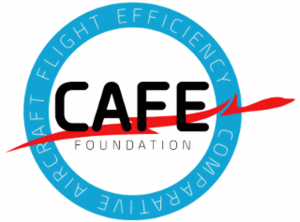Recently, we have been meeting more and more often with the electric drive as a replacement for the classic internal combustion engine. Slowly but surely, it is starting to take its place in almost all sectors of land transport. On the other hand, in the aviation industry, similar projects appear, even on a global scale, rather sporadically. The idea of Czech designers Martin Štěpánek, Pavel Urban and aircraft modeler Jaroslav Mach is all the more unique in this regard.
Paradoxically, several coincidences helped the creation of the originally competitive Phoenix U-15 Electra. In 2008, Martin Štěpánek discovered on the official website of the voluntary organization CAFE Announce a competition for an ecologically efficient aircraft planned for 2011. This discovery de facto started another sequence of events, which ultimately led to the construction and flight of a real aircraft. Coincidentally, at roughly the same time, Martin Štěpánek also met with modeler Jaroslav Mach and the author of the whole idea of creating the first Czech electric glider. After a discussion with another person, this time designer Pavel Urban, it became clear that it is at the limit of technical possibilities, but feasible. With this information, Martin Štěpánek together with his colleague Ing. Josef Rydl finally decided to leave Urban Air, to found their own company Phoenix Air, where they devoted themselves to the development of the U-15 Phoenix aircraft. Since the idea of a development center in Urban Air soon took over with its collapse, they turned to the already mentioned and very experienced designer Pavel Urban with the development of the aircraft.
 During the design and subsequent development of the new aircraft, Urban was primarily based on the proven UFM-13 Lambada machine. Already in December 2008, the first strength tests of the fuselage took place, and the following year in July, the first test flight. They managed to enter the machine in the CAFE/NASA Green Flight Challenge on December 31, 2010, literally at the last minute. At that time, only a month’s delay by the supplier of competing batteries robbed them of first place. Even though they were forced to install a standard Rotax engine in the machine for these reasons, they managed to get a nice 3rd place. Another award was the May 1st place in the Outstanding LSA (Most Beautiful Design of Light Sports Aircraft) competition in Florida, USA. After these successes, the Phoenix Air company began to focus more on the start of serial production of the Phoenix U-15 Phoenix variant, which is powered by a classic internal combustion engine (HKS 700E, Rotax 912 or Jabiru 2200) and its subsequent export to the foreign market. This aircraft is currently very popular mainly in the United States and France, where Volez magazine wrote about it already in 2009.
During the design and subsequent development of the new aircraft, Urban was primarily based on the proven UFM-13 Lambada machine. Already in December 2008, the first strength tests of the fuselage took place, and the following year in July, the first test flight. They managed to enter the machine in the CAFE/NASA Green Flight Challenge on December 31, 2010, literally at the last minute. At that time, only a month’s delay by the supplier of competing batteries robbed them of first place. Even though they were forced to install a standard Rotax engine in the machine for these reasons, they managed to get a nice 3rd place. Another award was the May 1st place in the Outstanding LSA (Most Beautiful Design of Light Sports Aircraft) competition in Florida, USA. After these successes, the Phoenix Air company began to focus more on the start of serial production of the Phoenix U-15 Phoenix variant, which is powered by a classic internal combustion engine (HKS 700E, Rotax 912 or Jabiru 2200) and its subsequent export to the foreign market. This aircraft is currently very popular mainly in the United States and France, where Volez magazine wrote about it already in 2009.
But let’s go back to the prototype electric version of the U-15 Electra. Back in July 2014, battery life, engine tuning and other technical characteristics were monitored on it during a test flight. However, due to technological limitations at the time, it was necessary to put the e-glider project on hold for a certain period of time. But only for a while, because already in 2017 the consortium of Czech companies and Pure Flight specialists returned to this prototype and the whole idea went through modernization. They created a new prototype, which differs from the original mainly in the all-composite construction with carbon fibers, partially changed shape of the fuselage and wings, and modified interior. Accumulators with a total capacity of 35 kWh are installed in the fuselage, which, together with other optimizations, currently enable a flight of up to 2.5 hours. The result is a two-seater low-wing aircraft newly named Φnix (pronounced phoenix), which is completely manufactured in the Czech Republic except for the batteries imported from Japan. The second generation, on which the designers from Pure Flight are currently working, should provide the electroplane with 5-6 hours of flight in the future.
So far, the biggest obstacle remains the weight limit of 600 kilograms of take-off weight, which the machine must meet according to the rules of the European Aviation Safety Agency. The good news is that the Pure Flight group has already secured the necessary permission for Φnix to fly normally and continue development with valuable aerial data. So that the future customer does not have to deal with the problem of charging batteries, a mobile charging station (so-called wall box) with a power of 13 to 16 kW is being developed simultaneously with the electrolyte. It should be able to charge the plane from zero to full capacity in just three hours. The consortium is also currently trying to lay the foundations for the electrification of Czech airports by negotiating with smaller international and sports venues about the possibility of installing their own wall boxes. The result of the entire complex project should be a network of airports with chargers, which will additionally communicate with the aircraft using a selected protocol, and the pilot will thus have an overview of where and how he can land when he needs to recharge his machine’s batteries.
source:
http://www.phoenixair.cz
https://www.flying-revue.cz/phoenix-u15
https://www.czechcrunch.cz/2019/01/cesi-sestrojili-unikatni-elektricke-letadlo-%cf%86nix-a-chteji-zmenit-poradky-v-leteckem-prumyslu/
http://technet.idnes.cz/cesky-konstrukter-uspel-v-soutezi-nasa-nyni-vyrabi-letadla-na-elektrinu-147-/tec_technika.aspx?c=A120123_1720710_pardubice-zpravy_mav

















